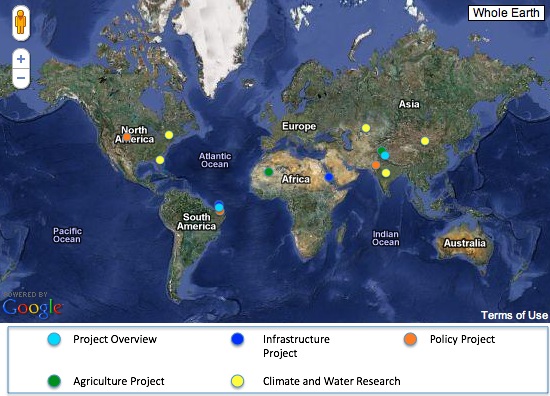Water51
-

Recruiting Tiny Organisms to Detect Water Pollution
Climate change has huge implications for water pollution, so with increasing climate change effects and the concern that many regions on the planet are approaching peak water, timely water pollution detection is critical.
-

A New Look at Global Water Scarcity from Columbia Water Center
Columbia Water Center is committed to sharing and disseminating the knowledge from research and development projects we have completed and are currently working on. We aim to create a collaborative environment in which progress towards understanding and addressing the increasing demands and scarcity of freshwater can be made in the 21st century. To help visualize…
-

Finding Answers to the Worsening Water Crisis in Gujarat, India
As explained in a recent blog post, falling groundwater levels in the Northern regions of the state of Gujarat, India, are reaching dramatically dangerous proportions. Columbia Water Center (CWC), however, believes that there are numerous technologies and practices that could save significant amounts of water and energy. Farmers have shown interest in applying them, but…
-

In the Arctic More Than Elsewhere, Things Are Heating Up
According to a new international study, water flowing into the Arctic Ocean from the North Atlantic is the warmest it has been in the past 2,000 years.
-

Solving Urbanization Challenges by Design – The Science of Green Roofs (part 2)
Patricia J. Culligan is a professor of civil engineering and engineering mechanics at Columbia University and the Vice Dean of Academic Affairs for Columbia Engineering. In part two of this interview she talks about the challenge of quantifying the economic benefits of green roofs, the potential for rooftop agriculture, and what it means to “solve…
-

Solving Urbanization Challenges by Design – The Science of Green Roofs
Patricia J. Culligan, professor of civil engineering and engineering mechanics, discusses her work with the Columbia University Green Roof Consortium to quantify the benefits of green roofs.
-

Michigan Case Demonstrates Growing Importance of Courts for Water Issues
According to a recent report by Deutsche Bank, the number of US lawsuits related directly or indirectly to climate change rose by nearly 300% between 2009 and 2010. In addition to cases focused more broadly on climate change, there have also been a growing number of cases focused specifically on water regulations. Examples of the…
-

Our Oceans: A Plastic Soup
“Humanity’s plastic footprint is probably more dangerous than its carbon footprint,” said Captain Charles Moore, who, in 1997, discovered the Great Pacific Garbage Patch. Its name is misleading because the huge expanse of floating marine debris is actually more like a soup of confetti-sized plastic bits, produced by the runoff of our throwaway lifestyle that…
-

Desalination: Yesterdayʼs Solution (part 3)
Worldwide, humans have quickly and wastefully consumed water from the cheapest sources by over-pumping aquifers and over-allocating rivers. Weʼve turned to technology to eek out more but technology is not without its costs. Every remaining incremental gallon of water will come at a higher and higher price. Are we nearing a breaking point?

AGU25, the premier Earth and space science conference, takes place December 15-19, 2025 in New Orleans, Louisiana. This year’s theme—Where Science Connects Us—puts in focus how science depends on connection, from the lab to the field to the ballot box. Once again, Lamont-Doherty Earth Observatory and Columbia Climate School scientists, experts, students, and educators are playing an active role, sharing our research and helping shape the future of our planet. #AGU25 Learn More
